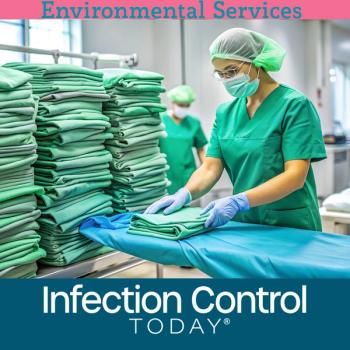
CDC Embarks on CDI Surveillance Project
The Centers for Disease Control and Prevention (CDC) says that steady increases in the rate and severity of Clostridium difficile infection (CDI) indicate a clear need to conduct longitudinal assessments of the impact of the condition. According to a notice in the Federal Register in late August, the agency is collecting up to 8,750 CDI Surveillance Report Forms from infection surveillance professionals during a one-year period.
"The proposed surveillance for CDI through the Emerging Infections Program will expand CDC capacity to monitor incidence of C. difficile in community and healthcare settings as well as to monitor and detect antimicrobial resistance," the CDC says in the Federal Register notice. "This activity supports the HHS Action Plan for elimination of healthcare-associated infections."
C. difficile is an anaerobic, spore-forming, gram positive bacillus that produces two pathogenic toxins: A and B. CDI ranges in severity from mild diarrhea to fulminant colitis and death. Transmission of C. difficile occurs primarily in healthcare facilities, where environmental contamination by C. difficile spores and exposure to antimicrobial drugs are common. No longer limited to healthcare environments, community-associated CDI is the focus of increasing attention. Recently, several cases of serious CDI have been reported in what have been considered low-risk populations, including healthy persons living in the community and peri-partum women.
The surveillance population will consist of persons residing in the catchment area of the participating Emerging Infections Program (EIP) sites. This surveillance poses no more than minimal risk to the study participants as there will be no interventions or modifications to the care study participants receive. EIP surveillance personnel will perform active case finding from laboratory reports of stool specimens testing positive for C. difficile toxin and abstract data on cases using a standardized case report form. For a subset of cases (e.g., community-associated C. difficile cases) sites will administer a health interview. Remnant stool specimens from cases testing positive for C. difficile toxin will be submitted to reference laboratories for culturing, and isolates will be sent to CDC for confirmation and molecular typing. Outcomes of this surveillance project will include the population-based incidence of community- and healthcare-associated CDI, and a description of the molecular characteristics of C. difficile strains and the epidemiology of this infection among the population under surveillance.
For this proposed data collection, there is no cost to respondents other than their time. An estimated total of 8,750 CDI Surveillance Case Report Forms (CRFs) will be completed during a one-year study period. Approximately 4,370 cases will require a completed CRF taking one hour; the remaining 4,380 cases will only require a partially completed CRF taking 15 minutes. An estimated total of 500 CDI Surveillance Health Interviews (HI) will need to be completed for the same time period. The estimated time to complete the HI is 45 minutes. Therefore, the total estimated annualized burden for this data collection is 5,840 hours.
The proposed surveillance for CDI through the Emerging Infections Program will expand CDC capacity to monitor incidence of C. difficile in community and healthcare settings as well as to monitor and detect antimicrobial resistance. This activity supports the HHS Action Plan for elimination of healthcare-associated infections.
Newsletter
Stay prepared and protected with Infection Control Today's newsletter, delivering essential updates, best practices, and expert insights for infection preventionists.





